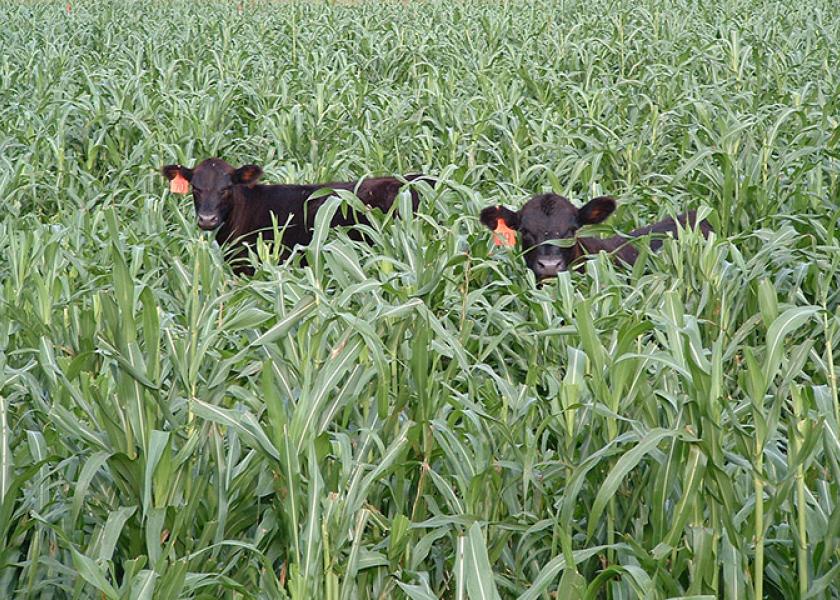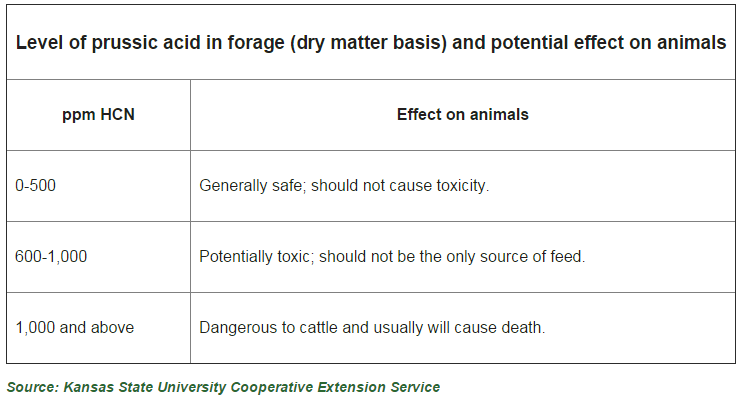Prussic Acid in Forages Poses a Threat to Livestock Following a Frost

Cyanide poisoning is the culprit after a frost on forages like sorghum, sorghum-sudangrass or sudangrass.
By: Phil Kaatz, Michigan State University Extension
During the fall season, frost will inevitably come. When this happens, farmers and livestock producers should be on the lookout for problems associated with prussic acid. Another time to be looking for potential problems is when rain occurs following a drought or extended period of hot, dry weather. This has definitely not been a problem for most of Michigan in 2015.
Prussic acid is hydrogen cyanide (HCN) and is caused by cyanide production in several types of plants under certain growing conditions. Summer annual crops such as sorghum, sorghum-sudangrass or sudangrass are all types of forages that can develop dangerous levels of the poison. Both the grain and forage types of sorghums can producer HCN.
When frost occurs, the plant cells that accumulate cyanide rupture, releasing the poison. After a killing frost, wait at least four to five days allowing the HCN gas to disperse before allowing animals to graze. New growth after a frost or drought will have very high levels of HCN and be extremely dangerous. Producers should wait until new growth is 18-24 inches tall before grazing or green chopping the forage.
When harvesting forages following frost, Michigan State University Extension recommends it is always best to have the forage analyzed to insure levels of HCN are safe. Ensiling will allow the forage to respire and reduce the amount of HCN. However, I can’t stress the point enough to make sure producers get forage tested that may have a high level of HCN.
“Nitrate and Prussic Acid Toxicity in Forage” is an excellent resource on the subject of nitrates and prussic acid and is available from Kansas State University.








